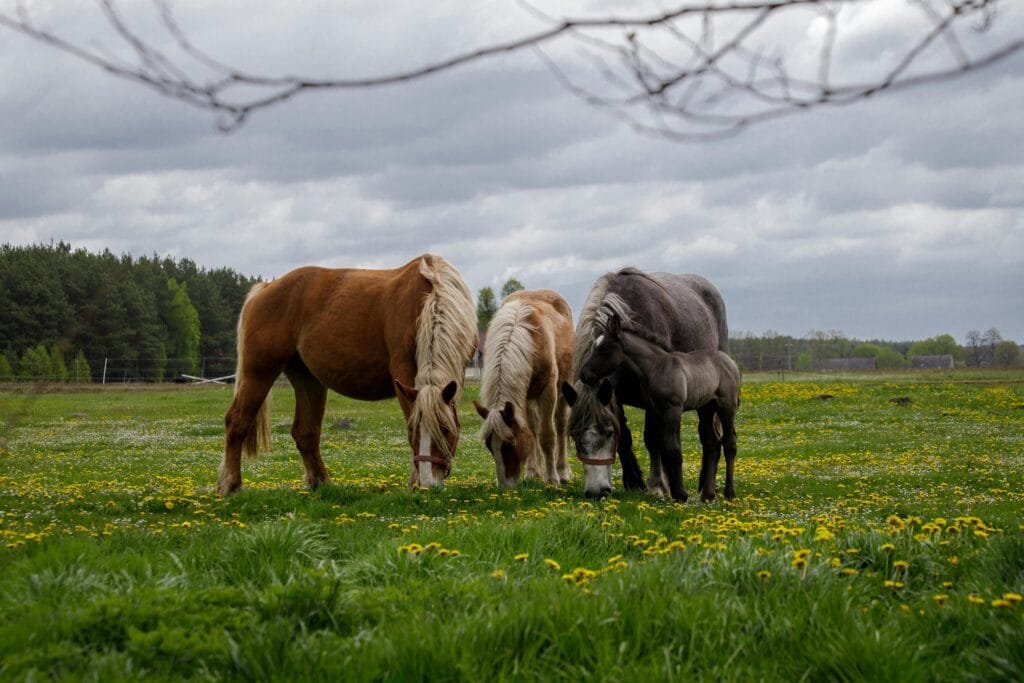Horses are powerful and majestic creatures, but they can also be unpredictable.
Whether you’re a beginner or an experienced handler, working safely with horses is essential for both your safety and the well-being of the horse. Here are some important rules to follow to ensure that your interactions with horses are safe, productive, and enjoyable.
1. Always Approach a Horse Calmly and From the Front
Horses can be startled easily, especially if they don’t see you coming. When approaching a horse, always do so calmly and from the front so they can see you. This reduces the chance of the horse getting frightened or defensive. Speak to the horse in a soft voice as you approach to alert them of your presence.
2. Never Stand Directly Behind or in Front of a Horse
Horses have a wide range of vision, but they have a blind spot directly in front of and behind them. Standing in these areas can be dangerous because the horse might not be able to see you and could accidentally step on you or kick you. Always stay to the side of the horse when working with them.
3. Keep a Safe Distance
While it’s important to be close enough to communicate with a horse, it’s also essential to maintain a safe distance, especially when handling an unfamiliar horse. Always stay alert and watch the horse’s body language to gauge their mood. Horses can be unpredictable, so having enough space to move out of the way quickly is vital.
4. Use Proper Equipment
Using the correct equipment is key to working safely with horses. Ensure that all tack (saddles, bridles, etc.) fits properly and is in good condition. Before riding or working with a horse, always check that the equipment is secure and free from any damage that could cause harm to the horse or you.
5. Be Aware of Their Body Language
Horses communicate a lot through body language. Understanding their signals can help you stay safe. For example, if a horse’s ears are pinned back, they might be annoyed or upset. If a horse is swishing their tail or stomping, it could be a sign of irritation or discomfort. Always be aware of these signs and adjust your actions accordingly.
6. Never Turn Your Back on a Horse
Even if you trust a horse, it’s always a good idea to avoid turning your back on them. Horses are large and strong, and turning your back can make you vulnerable, especially if the horse feels threatened or uncomfortable. Always maintain a position where you can see the horse and be ready to react if needed.
7. Lead Horses with Proper Technique
When leading a horse, always hold the lead rope with one hand about 6-12 inches from the halter and keep the other hand on the rope closer to the horse’s body. Walk beside the horse’s shoulder, not directly in front or behind, and move calmly but confidently. Avoid jerking the lead rope, and always stay in control of the horse.
8. Avoid Sudden Movements or Loud Noises
Horses can be easily spooked by sudden movements or loud noises. When working with horses, make sure your movements are deliberate and smooth. Avoid shouting, making sudden gestures, or approaching a horse too quickly. These actions can cause unnecessary stress and lead to accidents.
9. Stay Calm and Confident
Horses can sense your emotions and body language. If you’re nervous or anxious, the horse may become uneasy as well. It’s important to stay calm and confident when working with horses, as they tend to mirror the emotions of the people around them. If you feel uncertain, take a moment to calm yourself before proceeding.
10. Know When to Ask for Help
If you’re unsure about handling a horse or performing a particular task, never hesitate to ask for help from someone with more experience. Horses can be dangerous if not handled correctly, so it’s always better to seek guidance than to risk an accident. Whether it’s grooming, tacking up, or training, make sure you’re fully prepared and know your limits.




